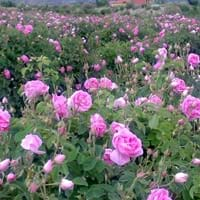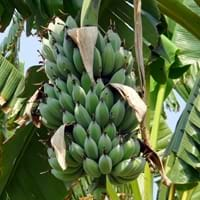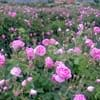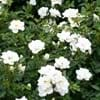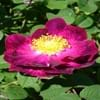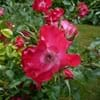Life Span
Perennial
Perennial
Type
Flowering Plants, Ornamental Plants, Perennial
Fruit
Origin
Hybrid origin
Hybrid origin
Types
Summer Damasks, Autumn Damasks
Not Available
Number of Varieties
Not Available
Habitat
gardens
Humid climates, Tropical regions
USDA Hardiness Zone
Not Available
9-15
AHS Heat Zone
Not Available
12-7
Sunset Zone
Not Available
H1, H2, 21, 22, 23, 24
Habit
Clump-Forming
Clump-Forming
Flower Color
Pink
White, Light Yellow
Flower Color Modifier
Bicolor
Bicolor
Fruit Color
Non Fruiting Plant
Yellow, Green, Gold
Leaf Color in Spring
Green, Gray Green
Green
Leaf Color in Summer
Dark Green, Green
Green
Leaf Color in Fall
Green, Gray Green
Green
Leaf Color in Winter
Dark Green, Green
Light Green
Leaf Shape
Pinnate
Linear
Plant Season
Spring, Summer, Fall
Spring, Summer, Fall, Winter
Sunlight
Full Sun, Partial Sun
Full Sun, Partial Sun
Growth Rate
Medium
Very Fast
Type of Soil
Loam, Sand
Loam, Sand
The pH of Soil
Acidic, Neutral
Acidic, Neutral
Soil Drainage
Well drained
Well drained
Bloom Time
Spring, Late Spring, Early Summer, Summer, Late Summer, Early Fall, Fall
Indeterminate
Repeat Bloomer
Not Available
No
Tolerances
Drought
Drought
Where to Plant?
Container, Ground, Pot
Container, Ground, Pot
How to Plant?
Cuttings
Cuttings, Divison, Tissue culture
Plant Maintenance
Medium
Medium
Watering Requirements
Average Water Needs
Average Water Needs
In Summer
Lots of watering
Lots of watering
In Spring
Moderate
Moderate
In Winter
Average Water
Average Water
Soil pH
Acidic, Neutral
Acidic, Neutral
Soil Type
Loam, Sand
Loam, Sand
Soil Drainage Capacity
Well drained
Well drained
Sun Exposure
Full Sun, Partial Sun
Full Sun, Partial Sun
Pruning
Remove damaged leaves, Remove dead branches, Remove dead leaves
Remove damaged leaves, Remove dead branches, Remove dead leaves
Fertilizers
All-Purpose Liquid Fertilizer
All-Purpose Liquid Fertilizer
Pests and Diseases
Beetles, Black Spot, Caterpillars, Downy mildew, Mosaic viruses, Powdery mildew, Rust, Scale insects, Thripes
Banana aphid, Banana mosaic, Banana weevil
Plant Tolerance
Drought
Drought
Flower Petal Number
Double
Single
Edible Fruit
Not Available
Yes
Foliage Texture
Medium
Bold
Foliage Sheen
Glossy
Matte
Invasive
Not Available
No
Self-Sowing
Not Available
No
Attracts
Birds, Butterflies
Hummingbirds, Small mammals
Aesthetic Uses
Showy Purposes
Showy Purposes
Beauty Benefits
Not Available
Not Available
Environmental Uses
Air purification
Air purification
Medicinal Uses
Not Available
Nutrients
Part of Plant Used
Flowers
Flowers, Leaves
Other Uses
Oil is used in perfume, soaps, creams, etc.
Used As Food
Used As Indoor Plant
Yes
No
Used As Outdoor Plant
Yes
Yes
Garden Design
Container, Cutflower, Feature Plant, Foundation, Mixed Border, Topiary / Bonsai / Espalier
Edible, Feature Plant, Fruit / Fruit Tree, Mixed Border, Tropical
Botanical Name
Rosa × damascena
Musa acuminata
Common Name
Damask rose, rose of castile
Banana, Cavendish Banana
In Hindi
जामदानी गुलाब
Cavendish Banana
In German
Damaszener-Rosen
Cavendish Banana
In French
Le rosier de Damas
Cavendish Banana
In Spanish
Rosa de Damasco, Rosa de Castilla
Cavendish Banana
In Greek
δαμασκηνό τριαντάφυλλο
Cavendish Banana
In Portuguese
rosa damascena
Cavendish Banana
In Polish
Róża damasceńska
Cavendish Banana
In Latin
surrexit Damascum
Cavendish Banana
Phylum
Magnoliophyta
Magnoliophyta
Class
Magnoliopsida
Liliopsida
Order
Rosales
Zingiberales
Clade
Not Available
Angiosperms, Commelinids, Monocots
Tribe
Not Available
Not Available
Subfamily
Not Available
Not Available
Number of Species
Not Available
Properties of Damask Rose and Cavendish Banana
Wondering what are the properties of Damask Rose and Cavendish Banana? We provide you with everything About Damask Rose and Cavendish Banana. Damask Rose has thorns and Cavendish Banana doesn't have thorns. Also Damask Rose does not have fragrant flowers. Damask Rose has allergic reactions like Rash and Cavendish Banana has allergic reactions like Rash. Compare all the properties and characteristics of these two plants. Find out which of these plant can be used as indoor plant. If you are interested to decorate your house and garden, find out aesthetic uses, compare them and select the plant which will beautify your surrounding. Along with beautification, try comparing medicinal and edible uses of Damask Rose and Cavendish Banana and you can choose the plant having best and most benefits.
Season and Care of Damask Rose and Cavendish Banana
Season and care of Damask Rose and Cavendish Banana is important to know. While considering everything about Damask Rose and Cavendish Banana Care, growing season is an essential factor. Damask Rose season is Spring, Summer and Fall and Cavendish Banana season is Spring, Summer and Fall. The type of soil for Damask Rose is Loam, Sand and for Cavendish Banana is Loam, Sand while the PH of soil for Damask Rose is Acidic, Neutral and for Cavendish Banana is Acidic, Neutral.
Damask Rose and Cavendish Banana Physical Information
Damask Rose and Cavendish Banana physical information is very important for comparison. Damask Rose height is 200.00 cm and width 200.00 cm whereas Cavendish Banana height is 90.00 cm and width 60.00 cm. The color specification of Damask Rose and Cavendish Banana are as follows:
Damask Rose flower color: Pink
Damask Rose leaf color: Green and Gray Green
Cavendish Banana flower color: White and Light Yellow
- Cavendish Banana leaf color: Green
Care of Damask Rose and Cavendish Banana
Care of Damask Rose and Cavendish Banana include pruning, fertilizers, watering etc. Damask Rose pruning is done Remove damaged leaves, Remove dead branches and Remove dead leaves and Cavendish Banana pruning is done Remove damaged leaves, Remove dead branches and Remove dead leaves. In summer Damask Rose needs Lots of watering and in winter, it needs Average Water. Whereas, in summer Cavendish Banana needs Lots of watering and in winter, it needs Average Water.
